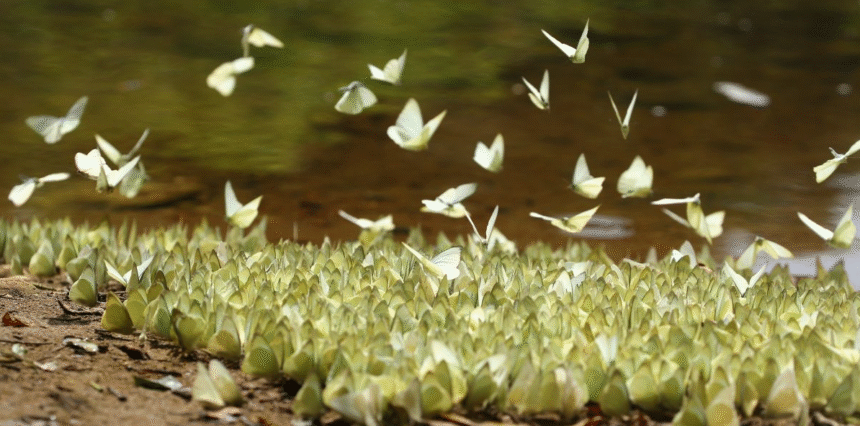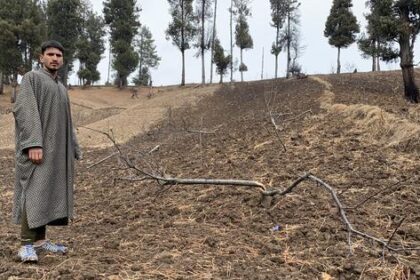Aralam Sanctuary Named India’s 1st Official Butterfly Species Habitat in Kerala
Aralam Sanctuary named India’s 1st official butterfly species habitat in Kerala, establishing a national milestone in ecological recognition and insect conservation.
Aralam Declared India’s First Butterfly Sanctuary – A Landmark for Ecological Recognition
A Sanctuary Reimagined
The Aralam Wildlife Sanctuary, nestled in the biodiverse terrain of north Kerala’s Western Ghats, is undergoing a remarkable transformation. The Kerala State Wildlife Board’s landmark decision on June 18 to rename it the “Aralam Butterfly Sanctuary” is not a mere change in nomenclature, but a powerful declaration of the region’s significance as a seasonal hub for mass butterfly migrations and an ecological treasure trove for lepidopterists.
Spread across a modest 55 square kilometers in Kannur district—just twice the size of Delhi’s urban core—Aralam is now poised to become India’s first officially designated sanctuary for butterflies. This reclassification is set to celebrate and safeguard the spectacle of butterfly migrations, while also spotlighting the unique ecological processes that make this region critical for the survival of several migratory and endemic species.
The Biodiversity Jewel of Kerala
Home to more than 260 butterfly species, Aralam forms a rich ecological corridor within the Western Ghats—one of the world’s eight “hottest hotspots” of biodiversity. Though many wildlife sanctuaries across India support diverse butterfly populations, what distinguishes Aralam is not just its species richness but the sheer numerical magnitude of butterfly congregations that pass through its hills and valleys during seasonal migrations.
One such marvel is the common albatross butterfly (Appias albina), known for its pale cream-yellow wings. Often perceived as plain in solitary form, these butterflies assume an extraordinary collective identity when they migrate en masse—from the upper ridges of Aralam’s 1,600-meter elevation to its low-lying 60-meter plains, and then to the moist banks of the Cheenkanni River.
This phenomenon occurs annually between December and February, when observers witness hundreds of thousands—and in some years, millions—of butterflies carpeting the riverbanks and forest trails. Here, they engage in “mudpuddling,” a behavior in which butterflies, predominantly males, rest on moist ground to absorb salts and minerals such as sodium from the soil. These nutrients play a vital role in reproductive success and flight stamina.
Tracking the Migration: Two Decades of Data
The ecological significance of these events has been studied and documented for over 25 years by the Malabar Natural History Society (MNHS) in collaboration with the Kerala Forest Department and scientists from the Zoological Survey of India (ZSI).
In mid-January 2025, the 25th annual butterfly migration survey was conducted by a team of naturalists and forest officials using the “point count” method—a timed visual census carried out from multiple vantage points. Over two days, researchers estimated that between 300,000 and 400,000 common albatross butterflies passed through the sanctuary in a single day.
Dr. Muahmed Jafer Palot, a ZSI entomologist who has long collaborated with MNHS, emphasized that such numbers may only represent a fraction of the total migrating population. “We still don’t know the final destination of many of these butterflies, which makes this an important area for continued research,” he said.
The Threat of Sand Mining and Habitat Disturbance
However, this vibrant migration spectacle is under imminent threat. The Cheenkanni River, a crucial mudpuddling zone, is increasingly encroached upon by unregulated sand mining. This activity alters the river’s natural substrate, disrupting both the butterflies’ nutritional behavior and their habitat. Palot warns that unchecked mining not only affects butterfly congregations but also weakens the river’s ecological balance, with cascading effects on associated flora and fauna.
Roosting Phenomena: Milkweed Butterflies in the Millions
Beyond mudpuddling, Aralam also hosts extraordinary roosting events by butterflies of the Danainae subfamily—commonly known as danaids or milkweed butterflies. During October and November, vast swarms of blue tigers (Tirumala limniace), common tigers (Danaus genutia), and striped tigers (Danaus chrysippus) arrive in Aralam and cling en masse to branches, leaves, and even telephone wires in a phenomenon known as communal roosting.
In 2012, survey teams recorded over 400,000 danaids roosting in the forest at one time. According to Palot, such dense congregations occasionally lead to the snapping of small tree branches due to the sheer weight of butterflies. “This is a natural event of staggering scale, comparable to monarch butterfly roosts in North America,” he observed.
Public Engagement: A Festival of Wings
Naturalists such as David V. Raju, a veteran participant in the annual Aralam migration surveys, describe the event as nothing short of a celebration. “There is a communal reverence and joy that surrounds the butterfly surveys. Even first-time attendees leave deeply touched and often become lifelong butterfly enthusiasts,” he said.
The sanctuary’s renaming is expected to further galvanize public interest. Raju notes that such recognition will boost Aralam’s visibility, making it a destination for nature-based tourism and education. “This is a natural event worthy of celebration. It deserves national—and international—recognition.”
Plans are already underway to integrate the sanctuary into a broader conservation and eco-tourism model. The Kerala Forest Department is developing three nearby panchayats as “butterfly villages,” complete with trained eco-guides, butterfly gardens, and annual festivals aimed at schoolchildren. These initiatives are designed to merge ecological awareness with sustainable economic opportunities for local communities.
Policy, Science, and Global Significance of India’s First Butterfly Sanctuary
The Policy Framework Behind the Renaming
The Kerala State Wildlife Board’s decision to rename the Aralam Wildlife Sanctuary to Aralam Butterfly Sanctuary was informed by years of research, citizen engagement, and ecological observation. The proposal had been under review for more than three years before being ratified on June 18, 2025, and was supported by documentation of large-scale migratory events, biodiversity surveys, and conservation assessments carried out by scientific institutions and civil society organizations.
According to officials at the Kerala Forest Department, the designation is not merely symbolic. It is set to usher in a range of legal and administrative safeguards specifically tailored to protect butterfly habitats. These include buffer zone delineation, water body conservation, strict curbs on illegal sand mining, and ecological restoration projects in degraded areas.
The state’s Wildlife Action Plan (2020–2030) had already recommended the creation of thematic sanctuaries to promote invertebrate conservation. The success of the Aralam initiative may pave the way for other specialized reserves, including moth sanctuaries in Wayanad and dragonfly zones in the Vembanad region.
Science in Action: A Living Laboratory for Biodiversity
With over 260 documented species of butterflies, Aralam represents one of India’s richest lepidopteran ecosystems. Scientists from the Zoological Survey of India (ZSI), Indian Institute of Science Education and Research (IISER) Thiruvananthapuram, and Malabar Natural History Society (MNHS) regard the site as a living laboratory for studying insect migration, climate change response, pollinator networks, and habitat fidelity.
“Aralam is invaluable not only because of the numbers it hosts but because of what it teaches us about ecological resilience,” said Dr. Jafer Palot. “The migratory patterns here offer rare insights into phenological cues, flight endurance, and the role of microclimates in butterfly navigation.”
Research here has already contributed to peer-reviewed publications and biodiversity atlases. Genomic sampling of butterflies such as the blue tiger and common crow has revealed adaptive mutations linked to humidity gradients, temperature shifts, and host plant availability. This opens avenues for understanding broader ecological responses in the face of anthropogenic pressures.
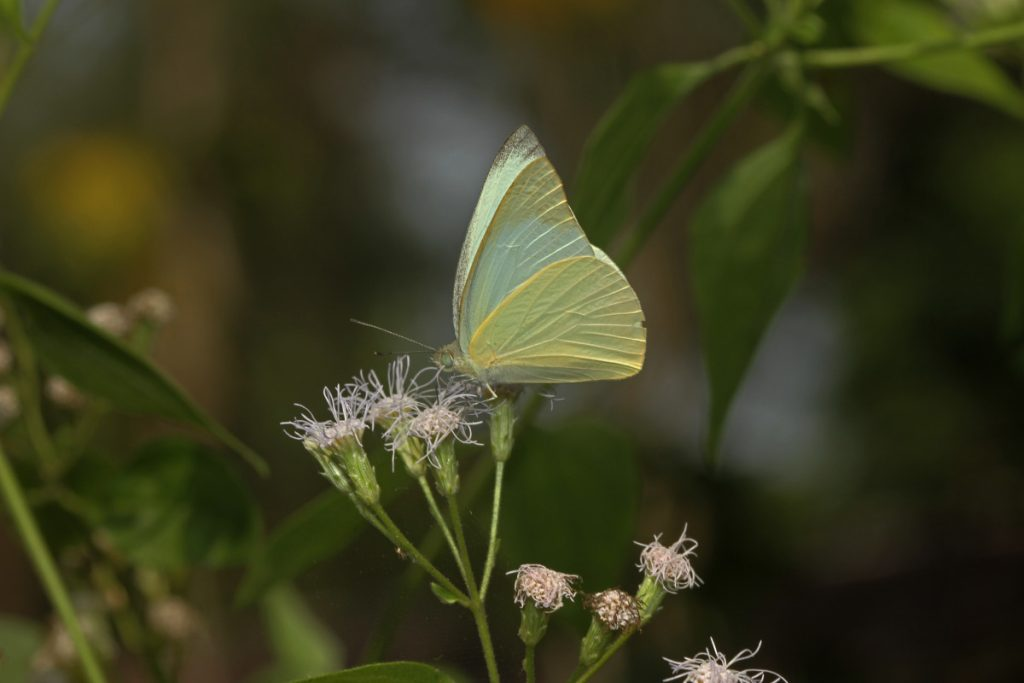
Involving Communities: A Model for Participatory Conservation
Local communities surrounding the Aralam Butterfly Sanctuary are integral to its stewardship. The Kerala Forest Department is spearheading the creation of eco-development committees (EDCs) in the three adjoining panchayats, empowering villagers to act as guides, educators, and caretakers.
Residents will be trained in butterfly identification, habitat monitoring, and conservation storytelling. Plans are underway to launch “butterfly walks” for school groups, tourists, and researchers, designed and conducted by locals.
These walks will serve dual purposes: raising ecological awareness and generating revenue for conservation-linked livelihoods. Women’s self-help groups are also being roped in to produce eco-friendly souvenirs, natural dyes, and butterfly-themed educational kits.
Eco-tourism and Sustainability: Avoiding the Pitfalls
While the sanctuary’s elevation to national attention is expected to attract thousands of eco-tourists annually, stakeholders are cautious about the potential ecological footprint. Authorities have placed a temporary moratorium on large-scale construction in buffer zones while a carrying-capacity assessment is conducted.
A Sustainable Tourism Management Plan (STMP) is in development, focusing on:
- Low-impact infrastructure
- Regulated visitor movement during peak butterfly congregation months
- Mandatory waste management protocols
- Seasonal zoning to protect sensitive habitats
“Aralam must not go the way of overexploited wildlife parks,” warned conservationist David Raju. “Its magic lies in its fragility, and we must design systems that enhance, not erode, that character.”
Global Comparison: Aralam and the Monarchs
Comparisons between Aralam’s butterfly congregations and the monarch butterfly migration in North America are inevitable—and scientifically illuminating. While monarch butterflies (Danaus plexippus) travel nearly 4,000 km between Canada and Mexico, danaids in Aralam migrate regionally but display similar behaviors of mudpuddling, roosting, and mass flight.
Ecologists note that both sites are critical “phenological windows” in the butterfly life cycle. However, unlike North America, India lacks robust legal frameworks specific to migratory insects. Aralam’s new designation could therefore serve as a template for national policy innovation.
Experts from the United Nations Environment Programme (UNEP) and the International Union for Conservation of Nature (IUCN) have already reached out to Kerala officials to initiate dialogue on global insect conservation partnerships, including data sharing, capacity building, and biogeographic modeling.
Moving Forward: Safeguarding an Insect Future
As the world grapples with biodiversity loss, particularly among insects, the declaration of the Aralam Butterfly Sanctuary is both timely and necessary. Pollinators form the foundation of ecosystem services—from food production to forest regeneration—and butterflies are charismatic ambassadors for their protection.
Future recommendations from the MNHS and other agencies include:
- Designating critical roosting zones as “High Conservation Value Areas”
- Creating a central butterfly migration observatory in Kerala
- Linking Aralam to other biodiversity corridors via ecological networks
- Integrating butterfly awareness into school curricula statewide
Ecological Education, Indigenous Wisdom, and Cultural Symbolism
Butterflies in Classrooms: Inspiring the Next Generation
As Aralam takes its place as India’s first butterfly sanctuary, educators and conservationists are placing strong emphasis on integrating butterfly-related studies into school curricula. With the support of the Kerala Education Department and local NGOs, special modules are being prepared under the state’s biodiversity education initiative to introduce students to butterfly biology, migration science, and habitat conservation.
These programs include:
- Nature-based learning camps within the sanctuary
- School butterfly gardens managed by eco-clubs
- Interactive field sessions with forest guides and naturalists
- Art, storytelling, and photography contests around butterfly themes
Dr. Bindu Nair, an education policy advisor to the Kerala State Biodiversity Board, said: “We believe environmental literacy begins at home and school. Aralam is the perfect launchpad to instill ecological values through hands-on, inquiry-based learning.”
Annual “Butterfly Festivals” will bring together students from across Kerala. Activities include guided butterfly walks, conservation pledge ceremonies, and science fairs. These events aim to shift ecological awareness from textbooks to living experiences.
Indigenous Ecological Knowledge and Community Practices
The region around Aralam is home to various tribal communities, notably the Paniya and Kurichiya peoples. Their cultural practices are deeply rooted in the landscape and its species, including butterflies. While butterflies have not traditionally been studied in isolation within indigenous cosmologies, they are observed as seasonal indicators, messengers of the forest’s health, and spiritual symbols.
As part of the sanctuary’s participatory management plan, indigenous elders are being consulted to document oral histories, signs, and local knowledge related to butterfly sightings, weather predictions, and forest rhythms.
Forest officer Reema George, who oversees the sanctuary’s community liaison program, noted: “These communities have been silent observers of butterfly migrations for generations. Their intuitive understanding of the landscape complements scientific data, creating a more holistic conservation framework.”
Workshops are being held to train tribal youth as eco-interpreters, enabling them to guide tourists and researchers while reinforcing pride in their heritage.
Butterflies and Climate Signals: The Science of Subtlety
Butterfly migration patterns, particularly their timing and altitude ranges, are being used as early indicators of climate variability. Researchers from the Indian Institute of Tropical Meteorology and IISc Bengaluru are studying how changes in temperature, rainfall, and forest canopy density affect the movement and lifecycle of species like the common albatross and striped tiger.
Preliminary data suggest that shifts of 10–15 days in migration windows have occurred over the last decade. There is also a noted upward migration, with species moving to higher altitudes, potentially in search of optimal thermal niches.
Remote sensing drones, microclimate sensors, and phenological tracking tools are now deployed in Aralam to develop predictive models that can aid regional climate adaptation planning. These findings will inform both forest management and agricultural decision-making in Kerala’s ecologically sensitive zones.
Symbolism and Cultural Resonance
Beyond their ecological and scientific value, butterflies occupy a rich symbolic space in India’s cultural imagination. In folklore, they represent transformation, freedom, and the soul’s journey. In classical Indian literature and tribal myths alike, butterflies are sometimes seen as omens, spirits, or divine messengers.
Kerala’s traditional mural art and temple motifs often include butterflies as aesthetic and spiritual elements. Cultural organizations are now working with local artists to revive these motifs and integrate them into educational signage, souvenirs, and awareness materials within the sanctuary.
A traveling exhibition titled “Wings of Myth and Science” is planned to tour schools and cultural centers, blending natural history exhibits with poetry, oral narratives, and multimedia storytelling.
Replication and Scaling: Toward a Network of Butterfly Sanctuaries
Inspired by Aralam, other states such as Maharashtra, Tamil Nadu, and Meghalaya are exploring the potential to designate butterfly-focused reserves. Sites like Amboli Ghat, the Kalakkad-Mundanthurai Tiger Reserve, and the Nokrek Biosphere Reserve are being surveyed for mass butterfly congregations and endemic species potential.
Experts at the National Biodiversity Authority (NBA) have proposed a National Butterfly Corridor Program to link hotspots through forest patches, agroforests, and community-managed reserves.
Policy briefs being developed by the Ministry of Environment, Forest and Climate Change (MoEFCC) suggest establishing at least 12 thematic sanctuaries across eco-regions by 2030. These would focus not only on butterflies but also on bees, moths, and other vital invertebrate pollinators.
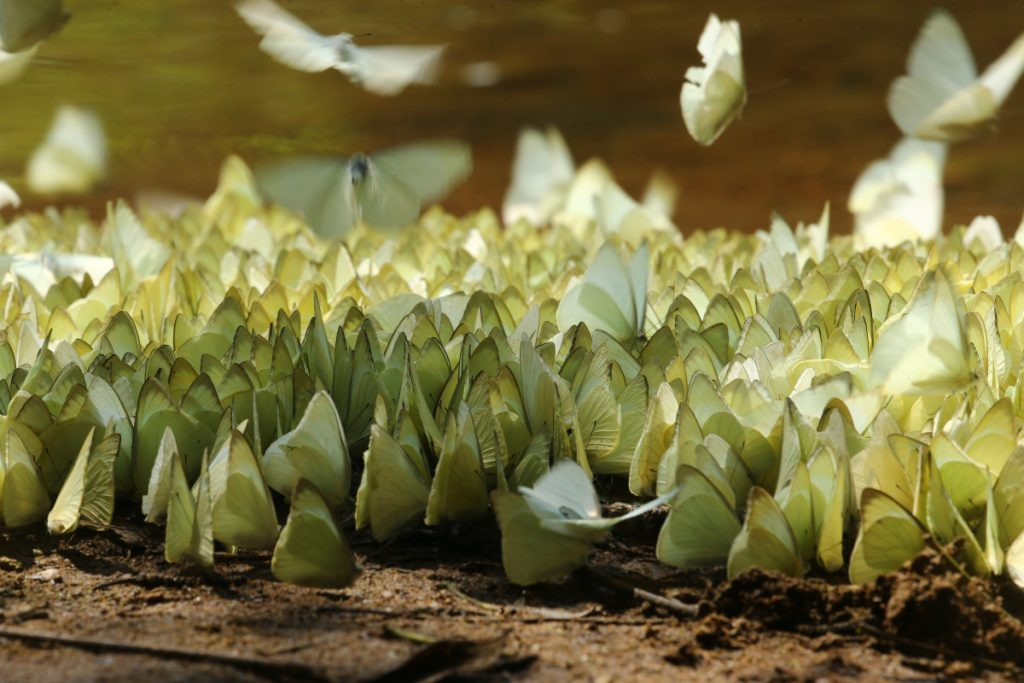
Policy Innovation, Global Diplomacy, and Sustaining India’s Butterfly Conservation Movement
A Policy Shift for Invertebrate Conservation in India
Aralam’s declaration as India’s first butterfly sanctuary has catalyzed discussions within environmental policy circles about the need to extend formal protection to invertebrates, which form over 90% of terrestrial biodiversity but receive only marginal conservation focus.
Currently, India’s Wildlife Protection Act (1972) lists only a limited number of butterfly species under Schedule I and II, thereby affording them the highest legal protection. However, conservationists argue that many key pollinators, including moths and other lesser-known butterflies, are excluded from these protections.
To address this gap, the Kerala State Biodiversity Board has submitted a formal recommendation to the National Biodiversity Authority (NBA) to revise existing wildlife legislation to incorporate:
- An Invertebrate Conservation Schedule
- Critical Habitat designations for insect-rich ecosystems
- Legal recognition for ecological behaviors like roosting and migration corridors
The MoEFCC is reportedly reviewing the feasibility of amending the Act or introducing new rules to support species-specific conservation for invertebrates.
Governance of Sanctuaries: Decentralization and Local Leadership
Governance frameworks are evolving to reflect more inclusive and locally empowered models. Under Kerala’s Participatory Forest Management (PFM) program, Aralam Butterfly Sanctuary is testing a co-governance approach involving forest officials, scientific advisors, local panchayats, tribal councils, and citizen science networks.
New governance instruments include:
- Biodiversity Management Committees (BMCs) with butterfly monitoring mandates
- Village-level Eco-development Committees (EDCs) responsible for habitat stewardship
- Community conservation agreements linked to seasonal migration observance
These localized frameworks aim to balance ecological integrity with livelihood needs, enabling community ownership and stewardship while ensuring scientific oversight.
International Partnerships and Biodiversity Diplomacy
Aralam’s transition has drawn international interest, particularly among countries active in pollinator diplomacy and ecological heritage designations. The United Nations Development Programme (UNDP), International Union for Conservation of Nature (IUCN), and Global Environment Facility (GEF) have expressed support for India’s emerging leadership in insect conservation.
A proposed “South Asia Pollinator Partnership” is under negotiation between India, Sri Lanka, Bhutan, and Nepal to jointly conserve migratory butterfly corridors and share genomic, behavioral, and phenological data.
UNESCO has also indicated interest in Aralam as a potential candidate for designation as a World Heritage Biodiversity Landscape, owing to its cultural, ecological, and educational significance.
Communicating Butterfly Science to the Public
A critical challenge in sustaining butterfly conservation is effective public communication. Scientific literature, while vital, often remains inaccessible to the general public and policymakers. Aralam’s outreach model addresses this through:
- Infographics summarizing migration data and conservation efforts
- QR-code enabled trails offering multilingual natural history narratives
- Social media campaigns featuring real-time butterfly sightings
- Citizen-led “Butterfly Diaries” documenting personal encounters
National Geographic India and Doordarshan are collaborating with the Kerala Forest Department to produce a documentary series titled “Flight of Light: The Aralam Migration,” expected to air in late 2025.
These outreach efforts are designed to convert passive visitors into active conservation stakeholders.
Sustainable Financing and Metrics of Success
Long-term conservation of Aralam and potential future butterfly sanctuaries hinges on robust financing mechanisms. Kerala is pioneering a multi-source financing strategy, which includes:
- State budget allocations under the Ecotourism and Green Missions
- Public-private partnerships for trail development and education infrastructure
- Crowdfunding campaigns supporting butterfly garden maintenance
- Micro-conservation grants for tribal eco-guides and biodiversity monitors
Key metrics being adopted to assess success include:
- Annual butterfly migration census data
- Number of participating local eco-guides and trained youth
- Volume of eco-tourism revenue reinvested in conservation
- Community satisfaction and benefit-sharing indices
Toward a National Butterfly Vision
Inspired by Aralam, a draft National Butterfly Conservation Vision 2040 is being developed through multi-stakeholder consultations. It seeks to:
- Identify, designate, and network high-density butterfly areas
- Fund longitudinal studies on climate-linked migration changes
- Integrate butterfly data into national climate adaptation frameworks
- Promote international citizen science collaborations and school exchanges
As India charts this ambitious path forward, Aralam stands as both prototype and beacon—reminding us that small-winged creatures can catalyze large-scale environmental imagination and policy transformation.
Legacy, Technology, and the Future of Butterfly Sanctuaries in India and Beyond
Lessons from Global Butterfly Conservation Initiatives
As India pioneers butterfly conservation through Aralam, valuable lessons can be drawn from global initiatives that have successfully protected migratory insects. The Monarch Butterfly Biosphere Reserve in Mexico, for example, demonstrates how transboundary cooperation, sustainable tourism, and citizen participation can be integrated into a unified conservation model.
Similarly, the UK’s Butterfly Conservation Trust manages over 30 nature reserves specifically for butterflies and moths, using rigorous monitoring, habitat restoration, and public education to reverse declining populations.
These examples underscore the value of:
- Continuous ecological monitoring
- Community science integration
- Sustainable tourism policies that benefit locals
- Cross-border conservation agreements
India’s conservation architects now seek to replicate these success elements, adapting them to local ecological, social, and administrative contexts.
The Role of Emerging Technologies
Technology is rapidly transforming how butterfly migrations and habitats are studied and protected. In Aralam and proposed future sanctuaries, these innovations are taking center stage:
- Drone Mapping: Real-time aerial surveillance to track butterfly congregation and detect habitat changes
- Micro-Tagging: Lightweight biodegradable tags to study short-range butterfly movements
- AI-Powered Identification Apps: Mobile platforms using image recognition to catalog butterfly species, aiding citizen scientists and tourists
- Climate Models: Predictive software that correlates butterfly presence with climate patterns, useful for early warning systems
- E-DNA Sampling: Environmental DNA collected from soil and water to assess presence of butterfly species without direct observation
Kerala is collaborating with tech partners including the Indian Institute of Technology (IIT) Palakkad and the Kerala State Remote Sensing and Environment Centre (KSREC) to implement these tools in Aralam.
The Long Arc of Ecological Research
Long-term ecological research (LTER) is the backbone of effective conservation. With over two decades of data already collected, Aralam is now being proposed as one of India’s official LTER sites under the Ministry of Earth Sciences.
Future research goals include:
- Climate-induced phenological shifts in butterfly life cycles
- Interactions between butterflies and invasive plant species
- Genetic drift and population health studies
- Restoration ecology practices for degraded butterfly corridors
Data from Aralam will feed into the Indian Biodiversity Information System (IBIS) and contribute to the Intergovernmental Science-Policy Platform on Biodiversity and Ecosystem Services (IPBES).
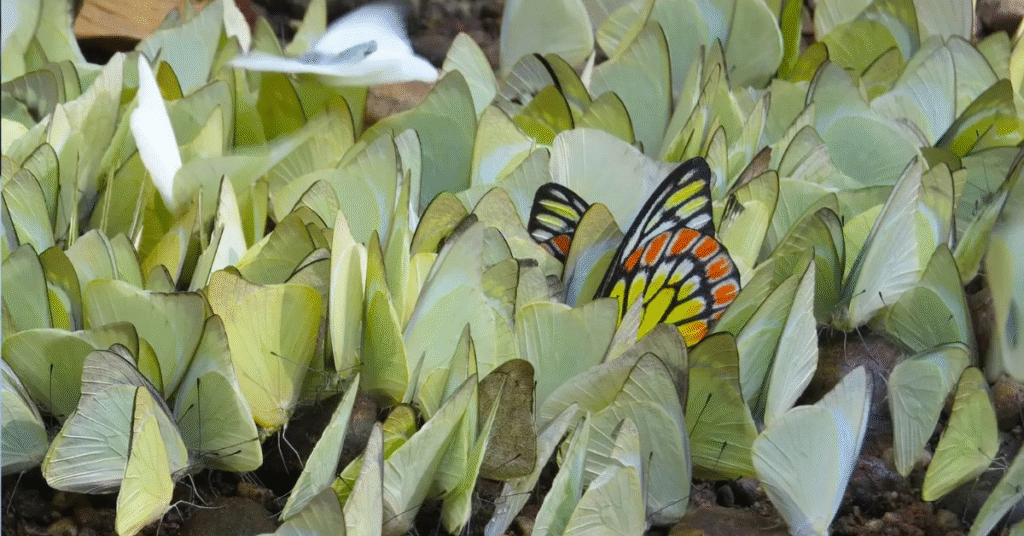
Shaping India’s Environmental Identity
The success of Aralam extends beyond conservation—it is now reshaping India’s environmental identity. Much like how the tiger became a symbol of wildlife protection through Project Tiger, the butterfly is poised to become a national emblem of pollinator conservation, climate awareness, and grassroots environmental action.
State boards of tourism, education, and culture are incorporating butterfly themes into festivals, school programs, and eco-certifications. “The butterfly,” noted Kerala’s Minister for Forests, “is our new ambassador of ecological hope.”
Merchandise, museum exhibits, postage stamps, and children’s books are being developed with butterfly imagery, helping to embed conservation in public consciousness.
A Vision Beyond Aralam
Building on the momentum of Aralam, the National Biodiversity Authority and the Ministry of Environment are evaluating the potential of creating a National Butterfly Reserve Network (NBRN). This network would consist of:
- At least 12 geographically distributed sanctuaries representing distinct butterfly ecozones
- Shared monitoring frameworks and seasonal migration observatories
- Cross-learning platforms between sanctuary managers and local communities
Proposed sites for future butterfly sanctuaries include:
- Amboli Ghat (Maharashtra) – rich in endemics and rare sightings
- Kalakkad-Mundanthurai (Tamil Nadu) – high elevation roosting zones
- Nokrek Biosphere Reserve (Meghalaya) – tribal-led biodiversity hotspots
- Sundarbans Fringe (West Bengal) – mangrove butterfly species and tidal behavior links
By 2040, the government envisions a network of sanctuaries that reflects the full diversity of India’s butterfly fauna while also promoting climate-smart ecotourism, indigenous stewardship, and ecological education.
Conclusion: A Small Winged Revolution
The journey of Aralam—from a modest wildlife reserve to a nationally and globally significant butterfly sanctuary—is more than a conservation milestone. It is a statement of values, a scientific laboratory, a community experiment, and a celebration of nature’s subtle wonders.
Through strategic foresight, inclusive governance, ecological humility, and technological innovation, Aralam has become a model for how India—and the world—can move from admiration of nature to its active defense.
As butterflies return each year to this Western Ghats haven, so too will the hopes, knowledge, and commitment of the people who walk its trails, count its wings, and dream of a more biodiverse future.
Also Read : 120 Lives Lost: Intense Scrutiny on Texas Flood Response Raises Alarming Questions


